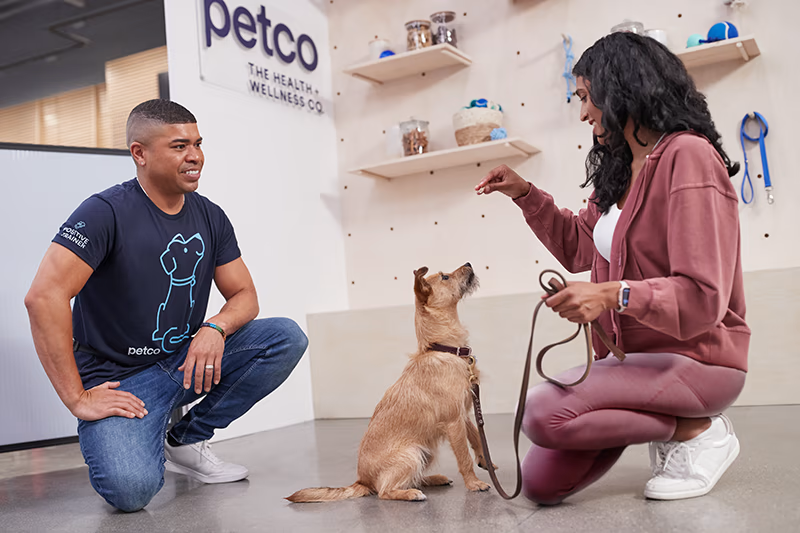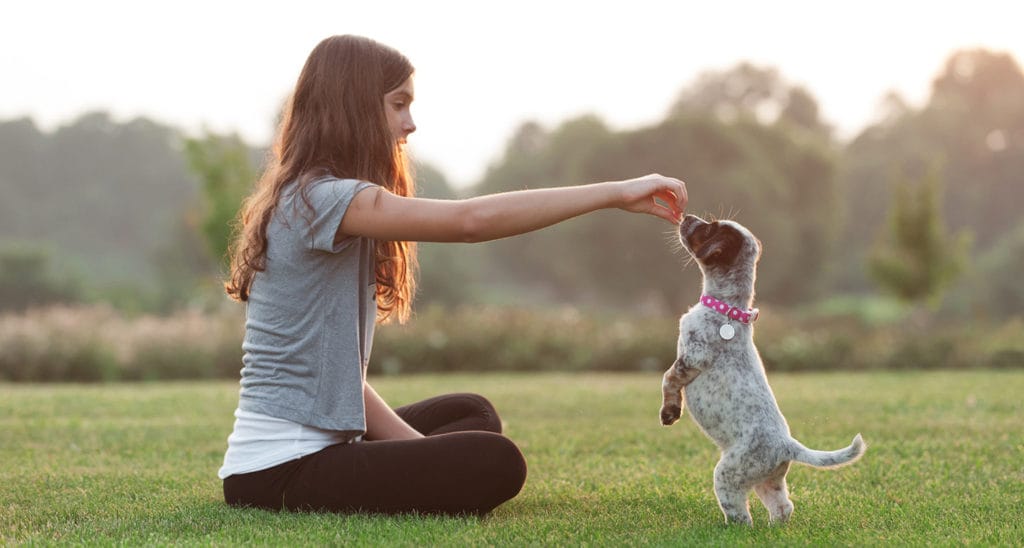Puppy Training Techniques: Teaching Basic Commands for a Happy Pet
Puppy Training Techniques: Teaching Basic Commands for a Happy Pet
Blog Article
Leading Puppy Training Techniques to Make Sure a Mannerly Animal
Reliable pup training is essential for growing a mannerly buddy, and numerous techniques can significantly affect a dog's development. As we explore these techniques additionally, it becomes clear that the success of pup training pivots on a combination of techniques that can transform your pet's habits in remarkable methods.
Favorable Reinforcement Strategies
Using favorable reinforcement techniques is necessary for efficient young puppy training, as it motivates preferred habits via benefits instead of penalty. This method maximizes the natural knowing procedures of pets, enhancing good habits by offering concrete and prompt incentives, such as deals with, praise, or play. By associating positive end results with particular actions, young puppies are most likely to repeat those habits in the future.
Rewards need to be given immediately after the wanted behavior occurs to produce a clear link in the pup's mind. Furthermore, varying the types of incentives can preserve a puppy's interest and motivation throughout the training process.

Consistency in Training Commands
Keeping uniformity in training commands is vital for enhancing the lessons found out through positive support strategies. Dogs prosper on regular and predictability, so using the exact same verbal commands and hand signals for certain actions is vital. This harmony aids pups understand what is expected of them, lowering confusion and aggravation for both the animal and the instructor.

Timing likewise plays a significant duty in uniformity. Commands ought to be provided immediately during training sessions and complied with promptly by positive support, such as treats or praise. This prompt action helps strengthen the association in between the command and the preferred habits.
Incorporating uniformity into training sessions will certainly develop a secure knowing environment, advertising quicker proficiency of commands. Eventually, a well-structured approach promotes a strong bond in between the puppy and its proprietor, leading to an extra obedient and mannerly animal.
Socializing With Other Family Pets
Socialization with various other pet dogs is critical for a puppy's growth, as it assists them find out appropriate habits and interaction skills in diverse social contexts. Very early communications with various animals can substantially affect a puppy's personality and versatility in numerous situations. When young puppies are revealed to a variety of animals, they come to be more positive and much less afraid, which can stop potential behavioral problems later on in life.

Show your puppy to identify signals from other animals, such as signs of playfulness or pain, promoting mutual respect and understanding. Regular socializing not only boosts your pup's social skills however likewise adds to their overall health, creating an extra harmonious living atmosphere.
Crate Training Perks
Recognizing the many benefits of cage training can greatly improve both the pup's and owner's experience. Crate training supplies a secure and protected atmosphere for pups, ensuring they feel secured when laid off. This sense of protection can dramatically reduce stress and anxiety and stress and anxiety degrees for both the animal and the proprietor.
Additionally, crates act as a beneficial housebreaking tool. Young puppies normally avoid staining their sleeping area, consequently click to read urging them to hold their bladder until they are let outdoors. This impulse can accelerate the house-training procedure, fostering great behaviors beforehand.
Crate training additionally aids in handling a puppy's actions when without supervision. By offering a marked room, proprietors can protect against destructive actions, such as eating on furnishings or obtaining right into harmful substances. Moreover, crates can be advantageous during traveling, supplying an acquainted area that can aid soothe a puppy in new atmospheres.
Lastly, developing a pet crate regular urges freedom, enabling young puppies to learn just how to be alone without worry. In general, pet crate training is a reliable method for advertising peace, security, and technique, bring about a well-adjusted, well-behaved pet dog.
Leash Training Basics
Leash training is an essential facet of accountable pet dog possession that ensures a satisfying and safe walking experience for both the pup and its owner. Appropriate chain training starts early, ideally during the pup's socialization period. When out in public., this training helps establish excellent habits and promotes positive habits.
To start, choose a comfortable collar or harness that fits your puppy well. Connect a tough chain, ensuring it is not as well long, as this can cause drawing and unpredictable habits. Start in a peaceful atmosphere to reduce distractions and slowly present your young puppy to new surroundings.
Usage favorable support methods, such as treats and praise, to encourage your puppy to stroll beside you. If your puppy draws, quit walking and wait for them Learn More to return to your side before continuing.
Additionally, include brief training sessions with fun interruptions to construct your puppy's emphasis. With devotion and perseverance, leash training will result in a well-mannered friend, making strolls satisfying for both the young puppy and the owner.
Conclusion
In final thought, employing effective pup training methods is critical for establishing a mannerly family pet. In general, these approaches collectively promote an unified relationship between young puppies and their proprietors.
As we explore these techniques better, it becomes clear that the success of young puppy training pivots on a combination of techniques that can change your pet dog's behavior in exceptional means.
Utilizing positive reinforcement methods is necessary for effective young puppy training, as it motivates wanted actions through rewards rather than punishment.Crate training likewise assists in managing a pup's actions when unsupervised.Leash training is an essential element of liable pet dog possession that makes sure a safe and pleasurable walking experience for both the young puppy and its owner.In final thought, utilizing efficient pup training techniques is essential for developing a well-behaved family pet.
Report this page